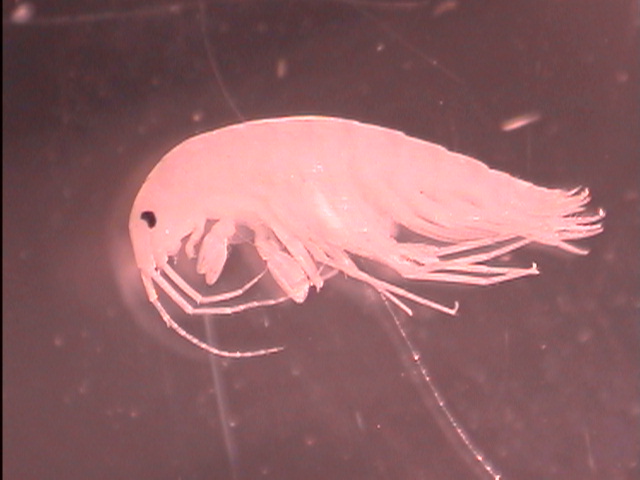Gammarus pulex (Freshwater Shrimp)
Description: Typically measures around 10-20mm long, with a curved body and long antennae.
Habitat: Found predominantly in freshwater streams, ponds, and lakes.
Ecological Importance: Vital in freshwater food chains, consuming detritus and serving as prey for fish.
Hyalella azteca
Description: Smaller than Gammarus, usually around 5-8mm in length, with a translucent body.
Habitat: Found in freshwater bodies across North America.
Ecological Importance: Acts as a primary food source for many small aquatic predators.
Talitrus saltator (Sand Hopper)
Description: Measures around 20mm long, with a tendency to leap when disturbed.
Habitat: Primarily found on sandy beaches, often burrowing into the sand.
Ecological Importance: Consumes decaying seaweed and other detritus.
Gammarus fasciatus
Description: A freshwater benthic amphipod characterized by its robust body structure.
Habitat: Found in rivers and lakes, it is notable for its ability to tolerate very low salinity levels.
Ecological Importance: Contributes to nutrient cycling in freshwater ecosystems and serves as a food source for various aquatic predators.
Caprella Penantis (Skeleton Shrimp)
Description: Another species from the fascinating skeleton shrimp group, has an elongated, slender body.
Habitat: Dwells on the seabed in shallow waters and is distributed in many parts of the world.
Ecological Importance: As with other Caprella species, it feeds on detritus and small organisms and serves as prey for larger marine predators.
Gammarus Pecos (Pecos Amphipod)
Description: This species belongs to the Gammaridae family and is recognized by its unique morphology.
Habitat: It is endemic to Pecos County, Texas, residing in the region's freshwater habitats.
Ecological Importance: Being an endemic species, the Pecos amphipod is an integral part of its local ecosystem, assisting in the breakdown of organic matter and serving as prey for local predators.


